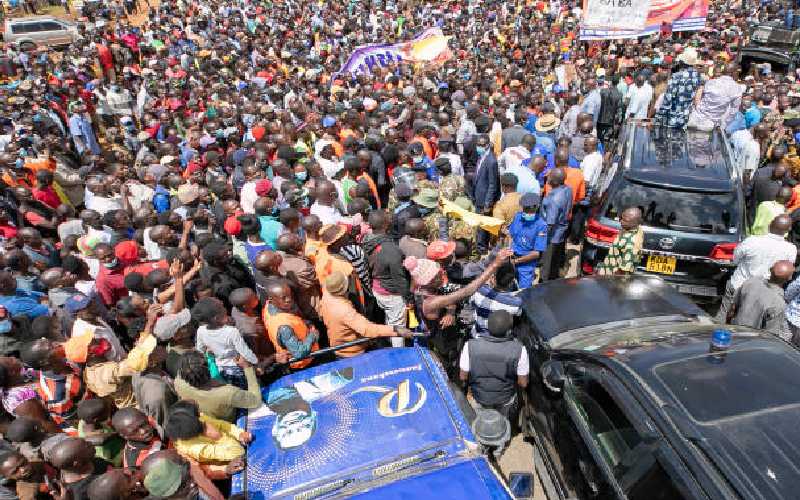×
The Standard e-Paper
Fearless, Trusted News

ODM leader Raila Odinga addressing residents of Sibanga area in Trans Nzoia County on his way to Kitale town on November 20, 2021. [Emmanuel Wanson, Standard]
ODM leader Raila Odinga is expected to officially announce his bid for next year’s presidential race on Thursday, December 9, three days to this year’s Jamhuri Day celebrations. The ODM leader is also expected to feature as a prominent understudy to President Uhuru Kenyatta, in the president’s final Independence Day fete.